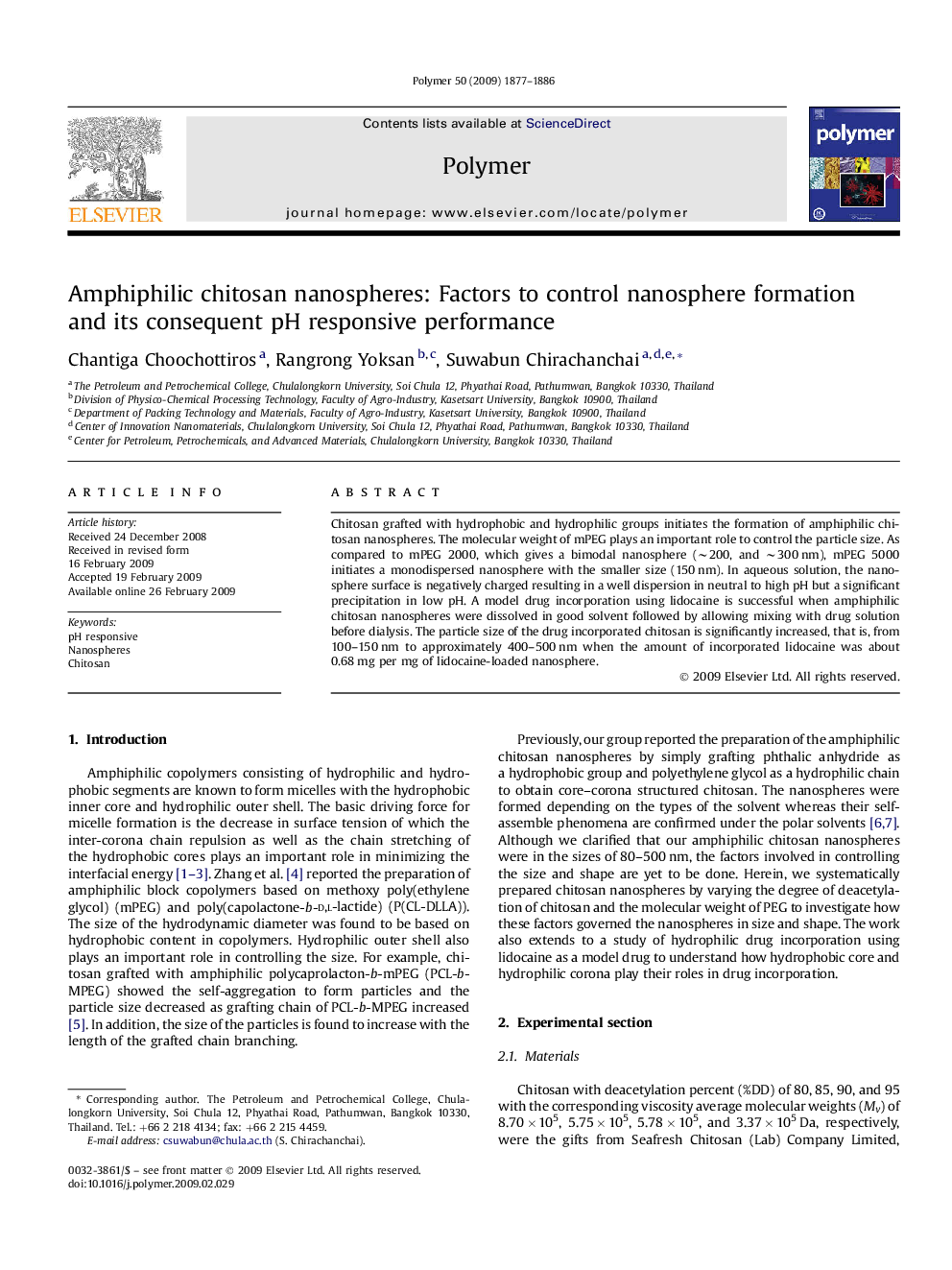| Article ID | Journal | Published Year | Pages | File Type |
|---|---|---|---|---|
| 5186322 | Polymer | 2009 | 10 Pages |
Chitosan grafted with hydrophobic and hydrophilic groups initiates the formation of amphiphilic chitosan nanospheres. The molecular weight of mPEG plays an important role to control the particle size. As compared to mPEG 2000, which gives a bimodal nanosphere (â¼200, and â¼300Â nm), mPEG 5000 initiates a monodispersed nanosphere with the smaller size (150Â nm). In aqueous solution, the nanosphere surface is negatively charged resulting in a well dispersion in neutral to high pH but a significant precipitation in low pH. A model drug incorporation using lidocaine is successful when amphiphilic chitosan nanospheres were dissolved in good solvent followed by allowing mixing with drug solution before dialysis. The particle size of the drug incorporated chitosan is significantly increased, that is, from 100-150Â nm to approximately 400-500Â nm when the amount of incorporated lidocaine was about 0.68Â mg per mg of lidocaine-loaded nanosphere.
Graphical abstractDownload full-size image
